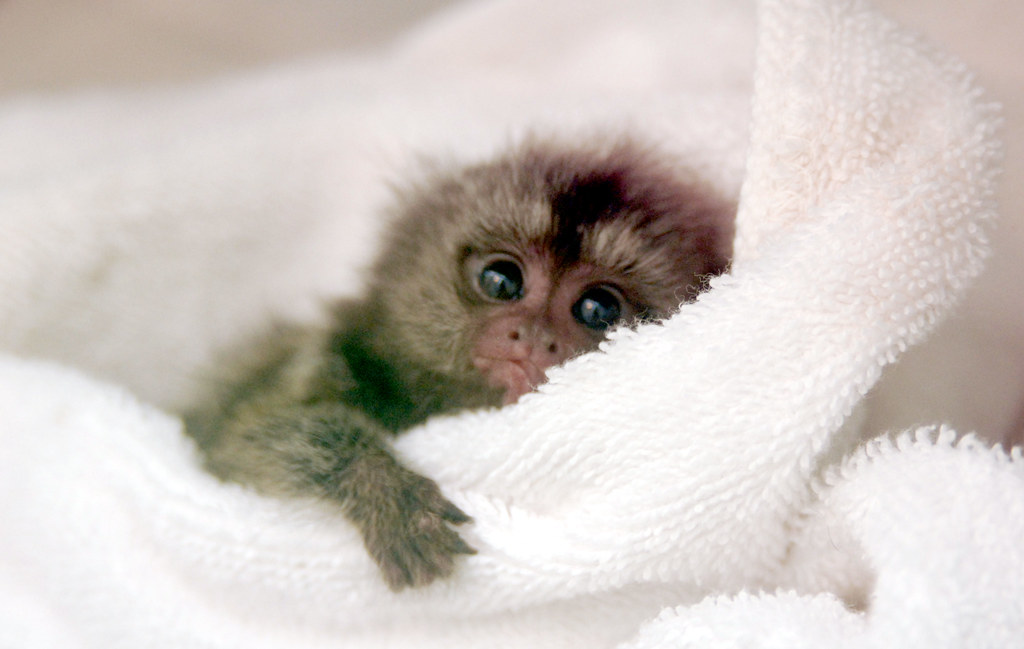

There has been debate among primatologists concerning the proper genus in which to place the pygmy marmoset. The biggest threats are habitat loss and the pet trade. The pygmy marmoset has been viewed as somewhat different from typical marmosets, most of which are classified in the genera Callithrix and Mico, and thus is accorded its own genus, Cebuella, within the family Callitrichidae. The female gives birth to twins twice a year and the parental care is shared between the group. Chemical signaling using secretions from glands on the chest and genital area allow the female to indicate to the male when she is able to reproduce. These monkeys may also make visual displays when threatened or to show dominance. Three main calling signals depend on the distance the call needs to travel. Members of the group communicate using a complex system including vocal, chemical, and visual signals. Although most groups consist of family members, some may also include one or two additional adult members. The modal size of a standard stable troop would be six individuals. It is generally found in evergreen and river-edge forests and is a gum-feeding specialist, or a gummivore.Ībout 83% of the pygmy marmoset population lives in stable troops of two to nine individuals, including a dominant male, a breeding female, and up to four successive litters of offspring. It is notable for being the smallest monkey and one of the smallest primates in the world, at just over 100 grams (3.5 oz).

The pygmy marmoset, genus Cebuella, is a small genus of New World monkey native to rainforests of the western Amazon Basin in South America.


 0 kommentar(er)
0 kommentar(er)
